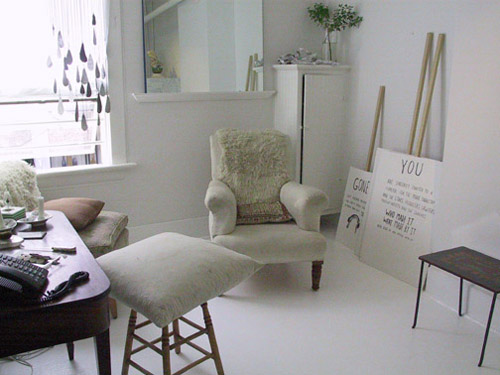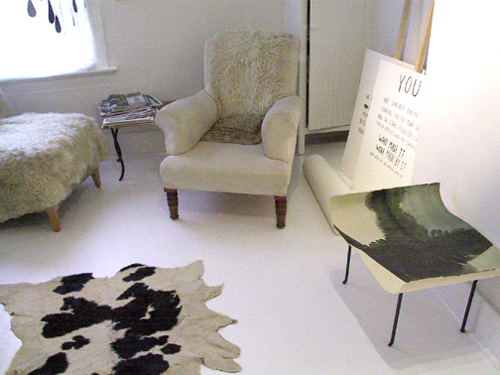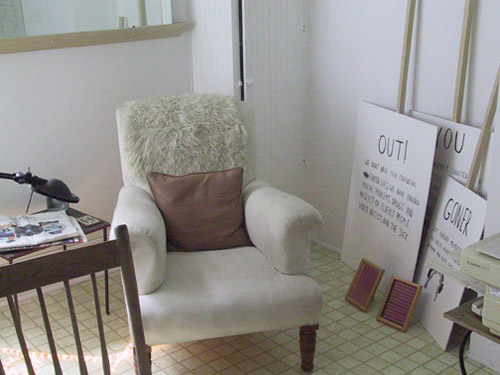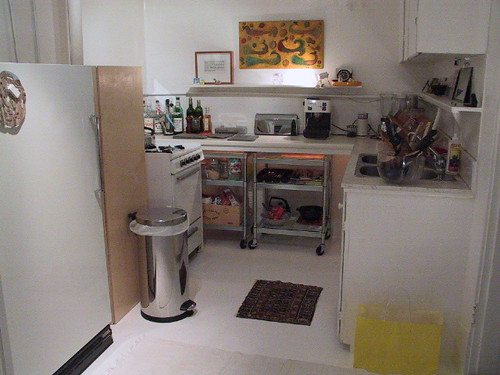
When I moved into this typical 1930s apartment in Vancouver’s east side in 1999, the first thing I did was paint over the kitchen’s dingy gold linoleum flooring. The linoleum was the worst thing about that apartment. Everyone always says not to paint linoleum – or any surface you walk on, for that matter – but the painted floor turned out to be durable, easy to deal with and gave me no end of pleasure. You would think a white floor would really show the dirt, but it didn’t seem to (partly because I rarely wore shoes in the apartment, out of deference to my downstairs neighbour), and the glossy painted finish was way easier to clean than the scuffed, dirt-attracting lineolum had been. You can see the old linoleum below (along with some fake protest signs made by an artist friend):
It’s ridiculously easy to do: Degrease the floor as much as you can, either with a proper degreasing liquid or just some strong soap, let it fully dry and then sand the linoleum thoroughly. 80 or 100 grit is fine – you can go finer but avoid anything finer than 150 because the grit does tend to clog a bit. Buy a couple of cans of a tough, dedicated floor paint. Most paint companies carry floor paint, but I got mine from Home Depot – I can’t remember the brand but it was water-based, not too smelly, and could be tinted any colour you wanted. I used a semi-gloss pure designer white. Between coats and when recoating, make sure you only walk on it in white socks, and follow the recoat times to the letter. Before moving heavier items back in, wait a week while the paint hardens. I didn’t want to move the fridge, so I just painted around (and under) it.
The result was quite interesting, because the texture of the lineoleum showed through in a pleasing way (see photo with the vacuum cleaner). The white floor made it feel much more mod in there, which was was great because all the pieces of furniture I owned back then were dingy antiquey items I ended up with when my grandfather’s house was sold. As an aside, that interesting corner cabinet in the kitchen was a typical old Vancouver cold cellar – these were cooled by a vent to the outside and were meant for storing vegetables and cheese etc. Apartment kitchens from this era also frequently had hot water tanks in plain view, because these were added later. Hence the homemade birch screen below, which is a 5′x5′ sheet of Baltic birch cut in equal thirds, sanded and finished with varathane, and then re-assembled with two long piano hinges. All together, this doesn’t amount to a proper kitchen renovation, but it was a cheap cosmetic fix that made the apartment feel a lot nicer. The whole job cost about $200 if you include the birch screen.




